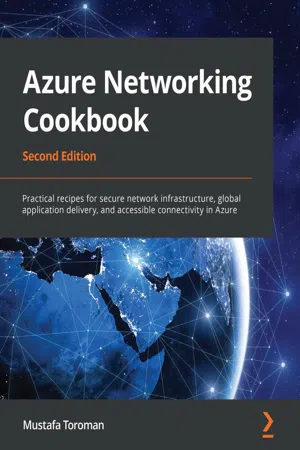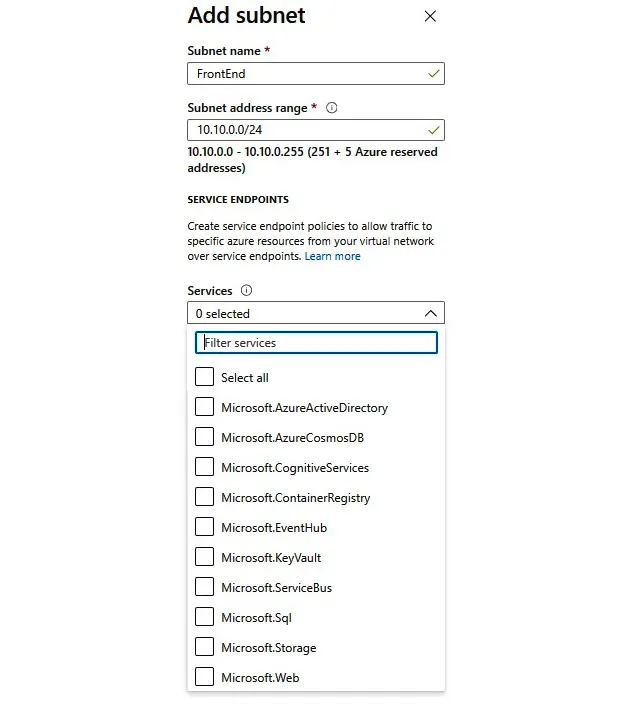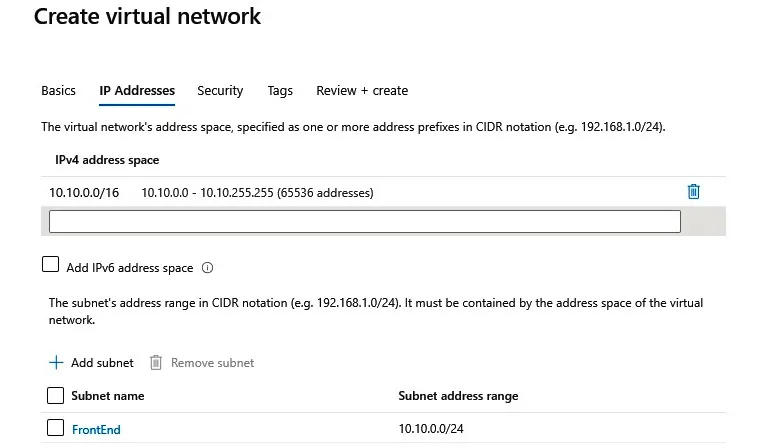
Azure Networking Cookbook
Practical recipes for secure network infrastructure, global application delivery, and accessible connectivity in Azure, 2nd Edition
Mustafa Toroman
- 298 páginas
- English
- ePUB (apto para móviles)
- Disponible en iOS y Android
Azure Networking Cookbook
Practical recipes for secure network infrastructure, global application delivery, and accessible connectivity in Azure, 2nd Edition
Mustafa Toroman
Información del libro
Find out how you can leverage virtual machines and load balancers to facilitate secure and efficient networking
Key Features
- Discover the latest networking features and additions in Microsoft Azure with this updated guide
- Upgrade your cloud networking skills by learning how to plan, implement, configure, and secure your infrastructure network
- Provide a fault-tolerant environment for your apps using Azure networking services
Book Description
Azure's networking services enable organizations to manage their networks effectively. With the Azure Networking Cookbook, you'll see how Azure paves the way for an enterprise to achieve reliable performance and secure connectivity.
This updated second edition will take you through the latest networking features in Azure. The book starts with an introduction to Azure networking, covering basics such as creating Azure virtual networks, designing address spaces, and creating subnets. You'll create and manage network security groups, application security groups, and IP addresses in Azure using easy-to-follow recipes. As you progress through the book, you'll explore various aspects such as DNS and routing, load balancers, Traffic Manager, and site-to-site, point-to-site, and VNet-to-VNet connections. This cookbook covers all the functions crucial to understanding cloud networking practices and being able to plan, implement, and secure your network infrastructure with Azure. You'll not only upscale your current environment but also get well-versed with monitoring, diagnosing, and ensuring secure connectivity. The book will help you grasp best practices as you learn how to create a robust environment.
By the end of this Azure cookbook, you'll have gained hands-on experience developing cost-effective solutions that can facilitate efficient connectivity in your organization.
What you will learn
- Get to grips with building Azure networking services
- Understand how to create and work on hybrid connections
- Configure and manage Azure networking services
- Explore ways to design high availability network solutions in Azure
- Discover how to monitor and troubleshoot Azure network resources
- Work with different methods to connect local networks to Azure virtual networks
Who this book is for
This cookbook is for cloud architects, cloud solution providers, and anyone who deals with networking on Azure. A basic understanding of Azure will help you to make the most of this book.
Preguntas frecuentes
Información
1. Azure Virtual Network
- Creating a virtual network in the Azure portal
- Creating a virtual network with PowerShell
- Adding a subnet in the Azure portal
- Adding a subnet with PowerShell
- Changing the address space size
- Changing the subnet size
Technical requirements
- An Azure subscription
- Azure PowerShell
Creating a virtual network in the Azure portal
Getting ready
How to do it…
- In the Azure portal, select Create a resource and choose Virtual network under Networking (or search for virtual network in the search bar). A new pane will open, where we need to provide information for the virtual network. First, select the Subscription option we want to use and the Resource group option for where the virtual network will be deployed. Then, include a name and select a region (of the Azure datacenter) for where the virtual network will be deployed. An example is shown in Figure 1.1:

Figure 1.1: Creating an Azure virtual network
- In the next pane, we first need to define the address space and define the Subnet name and Subnet address range values for the first subnet. After the address space is defined, as shown in Figure 1.2, we will receive a message stating that This virtual network doesn't have any subnets. Therefore, we need to select the Add subnet option:

Figure 1.2: Configuring a virtual network address space and subnet
- In the Add subnet pane, we need to define Subnet name and Subnet address range. Optionally, we can add service endpoints we want to connect to the virtual network. Service endpoints allow us to connect to Azure services in a secure way, over Azure backbone infrastructure, without needing a public IP address. An example is shown in Figure 1.3:

Figure 1.3: Adding a subnet
- After we have added the first subnet, in our case, FrontEnd, we can add more subnets to the virtual network or proceed to the Security section, as shown in Figure 1.4:

Figure 1.4: Adding the FrontEnd subnet
- In the Security section, we can choose whether we want to enable Bastion Host, DDoS protection, and Firewall. If any of these options are enabled, we need to provide additional information for that service. Afterward, we can optionally add tags, or skip that and create the service. An example is shown in Figure 1.5:

Figure 1.5: Toggling security options
- Creating a virtual network usually does not take much time and should be completed in under two minutes. Once the deployment is finished, we can start using the virtual network.
How it works…
Creating a virtual network with PowerShell
Getting ready

Figure 1.6: Connecting to an Azure subscription from PowerShell
How to do it…
Índice
- Azure Networking Cookbook, Second Edition
- Preface
- 1. Azure Virtual Network
- 2. Virtual machine networking
- 3. Network Security Groups
- 4. Managing IP addresses
- 5. Local and virtual network gateways
- 6. DNS and routing
- 7. Azure Firewall
- 8. Creating hybrid connections
- 9. Connecting to resources securely
- 10. Load balancers
- 11. Traffic Manager
- 12. Azure Application Gateway and Azure WAF
- 13. Azure Front Door and Azure CDN
- Index